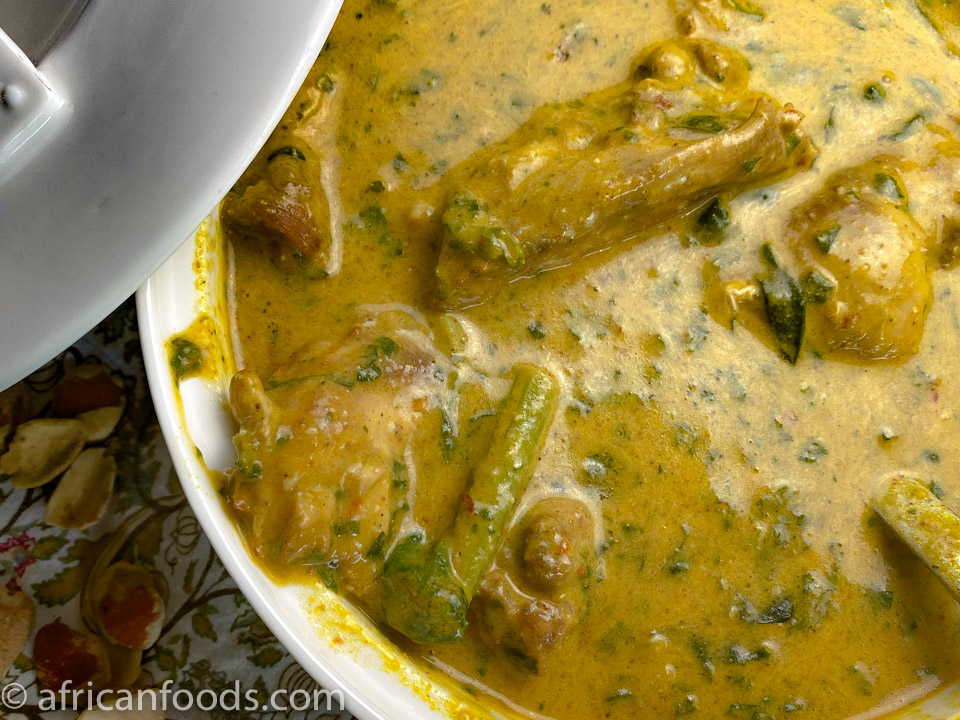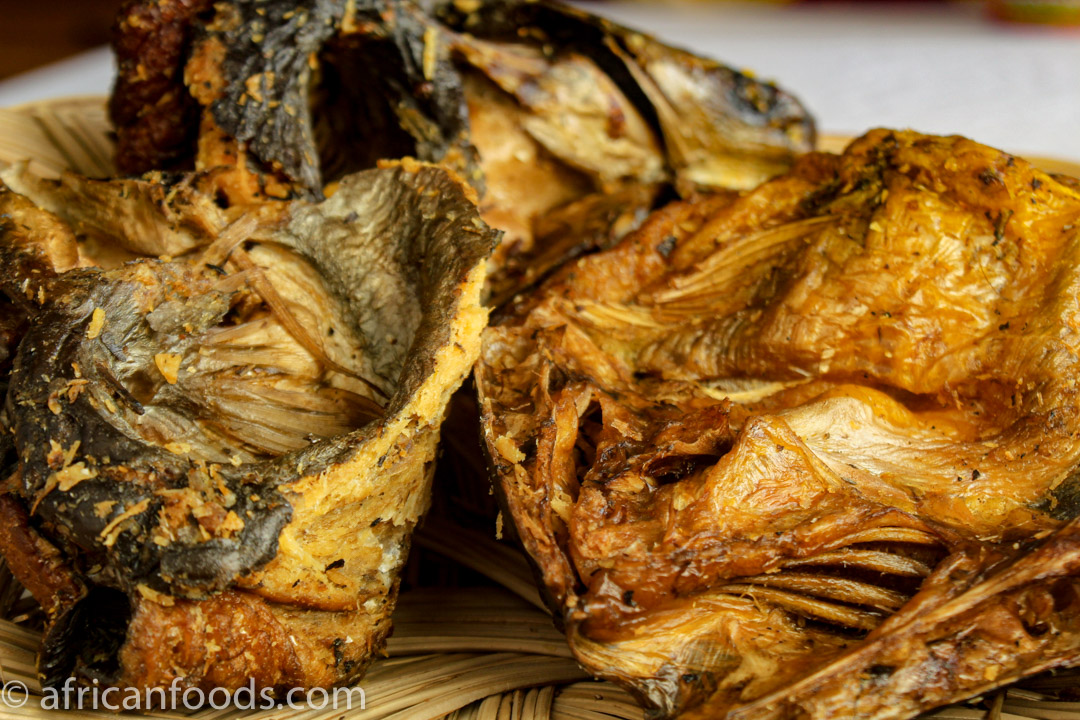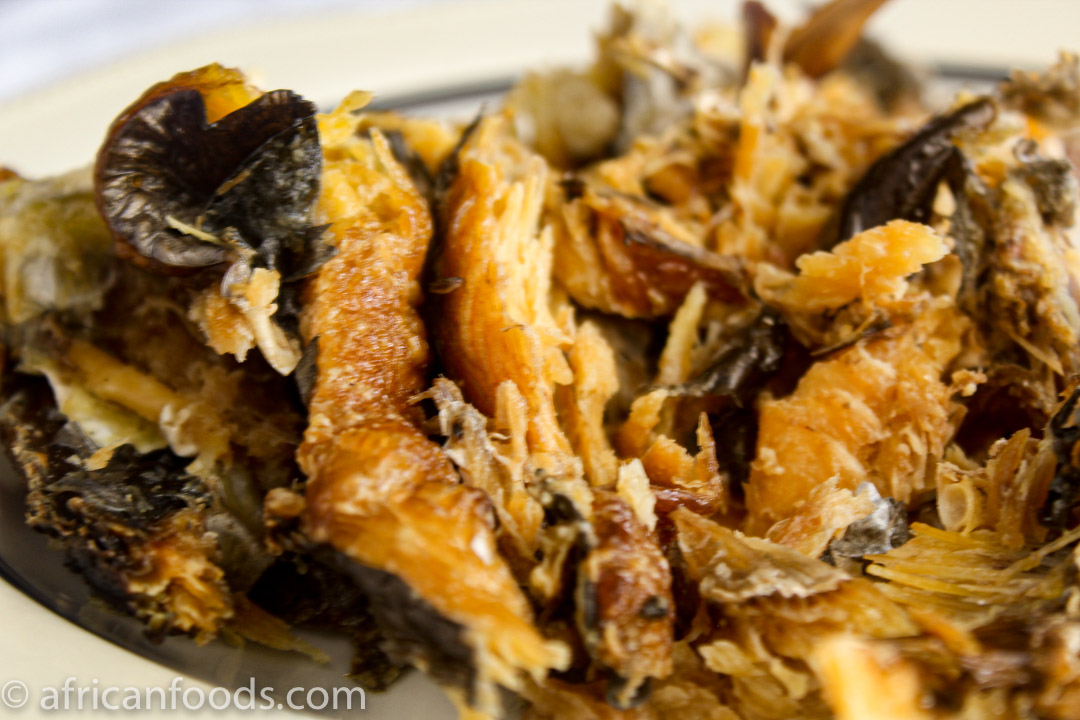Ogbono Soup Recipe
Ogbono soup is made from the seed of a wild (bush) mango plant called dika or the African-mango (Irvingia gabonensis) used in preparing a protein-rich delicacy called ogbono soup. Traditionally, leafy vegetables, stockfish, dried chilli peppers, ground crayfish, kpomo or cow skin, bush meat and your choice of meat, are used in preparing the soup that derives its name from this seed.
Ogbono soup is one of the most popular sauces in Nigeria and most of West Africa. The main ingredient is the ogbono seed, which is usually blended dry and serves to thicken the sauce giving it unique flavour and taste. When combine in liquid(stock in this case) ogbono "draws" as it is described in Nigeria. That is, it becomes slimy not in a bad way, that is what makes it awesome. You need to try it out to experience delight from this very tasteful sauce.
The recipe has very basic ingredients that you can find everywhere. Even the ogbono seed is available in many countries, just pop into your local African food shops.
What Is Ogbono
Botanically, ogbono is known as irvingia gabonensis. It is a fruit and a species of mango. The seed of this wild bush mango is collected and dried, then, used as the main ingredient for ogbono soup, with its earthy, unique flavour.
Uses Of Ogbono
In addition to using the seed as the main ingredient for ogbono soup as mentioned above, the fruit is used in the production of fruit juice, jellies, jam, margarine, soap, dika vegetable oil.
What is Ogbono Soup Like?
Like okra, it is used in preparing "draw soup", that is it has a thick, sticky consistency in liquid. But when combined in well prepared stock, you get an amazingly delicious meal.
... A word of warning: when using ogbono seed, make sure you avoid those with damp or greenish brown mold. Those infested with mold should be selected out and thrown away. They contain fungi that produce afla-toxins implicated in some liver diseases.
Ogbono Soup Recipe
Ogbono soup
|
Servings: 6-8 |
Prep Time: 20min |
Cooking Time: 60min |
Ingredients
- one pack of chicken thighs(12-15 thighs)
- 1-2 large dried fish( get this and crayfish from Africanfood shops)
- 3 tablespoons of dry crayfish, sieved to ensure no debris before grinding
- 1-2 tablespoons of dried blended paprika
- 1 1/2 cup of dry clean grinded ogbono
- 1/4 cup of palm oil
- 1 tablespoon olive oil
- 1 small onion chopped
- 1 teaspoon thyme
- 1 teaspoon ginger
- 1 teaspoon garlic powder
- 500g of chopped spinach or kale or any leafy green of choice
- salt to taste
Method
Soak the dried fish in hot water for about five minutes. This softens it a little and makes it easier to take out the bones and thorough rinse in hot water, then set aside. See picture at the bottom to see what it looks like after cleaning. Note that the dried fish is basically for flavour as you will only get bits of it after cooking. But it is an excellent addition.
Rinse the chicken and transfer into a pot with chopped onion, thyme, garlic powder ginger, half of the paprika and salt. Add about 500mls of water and cook for about 20 minutes. For me, because the chicken I used is more tender, I transfer chicken onto an oven tray, drizzle a bit of olive oil and baked at 400F for 40minutes.
Add another 500mls of water and allow the stock to continue cooking at low heat but add the dried fish this time and cook on medium-high for about 20 minutes.
While the chicken stock is simmering, place a skillet on the stove over medium heat and melt the palm oil. When palm oil is hot but not smokey, stir in the ground ogbono and combined the oil and ogbono. You will smell the distinct aroma of the ogbono as it forms into a paste. 5 minutes
Gradually stir in the paste into the simmering stock, stirring vigorously until combined. Add a bit of water if it is too thick until you reach your desired consistency. 5-8 minutes
Allow cooking for another 10 minutes on medium-low.
Add the chicken and vegetables. Check for salt and pepper, then, adjust and cook for a further 10 minutes.
Turn off heat and serve with eba, pounded yam or any fufu of choice.
Recipe provided by www.AfricanFoods.co.uk
Have Tried This Recipe?
You can either share it here or tag me on Instagram.
Want regular updates on African cuisines and food recipes? What about unique health information about these foods - what to eat and avoid to keep healthy from the list of African recipes available?
Fill in the form below to subscribe to our Newsletter - AfricanFoods Weekly?
Worried about spamming? We are too. We will never ever give or pass on your information to anyone else. We will only use your email address to send you your copy of our weekly newsletter. We do have a zero tolerance to spam. We subscribe to a very strict policy on the handling and use of information we gather on this site! We also get paid for affiliate links on this site. See our privacy policy for further details.
Follow us on social media:
Get Our Weekly Newsletter. Subscribe Today. It's FREE.
Subscribe to African Foods Weekly
Get African food recipes, cooking tips, and healthy eating info delivered to your inbox every week. Simply fill in your email below and click SUBSCRIBE .
(Your information will not be shared)













New! Comments
Have your say about what you just read! Leave me a comment in the box below.